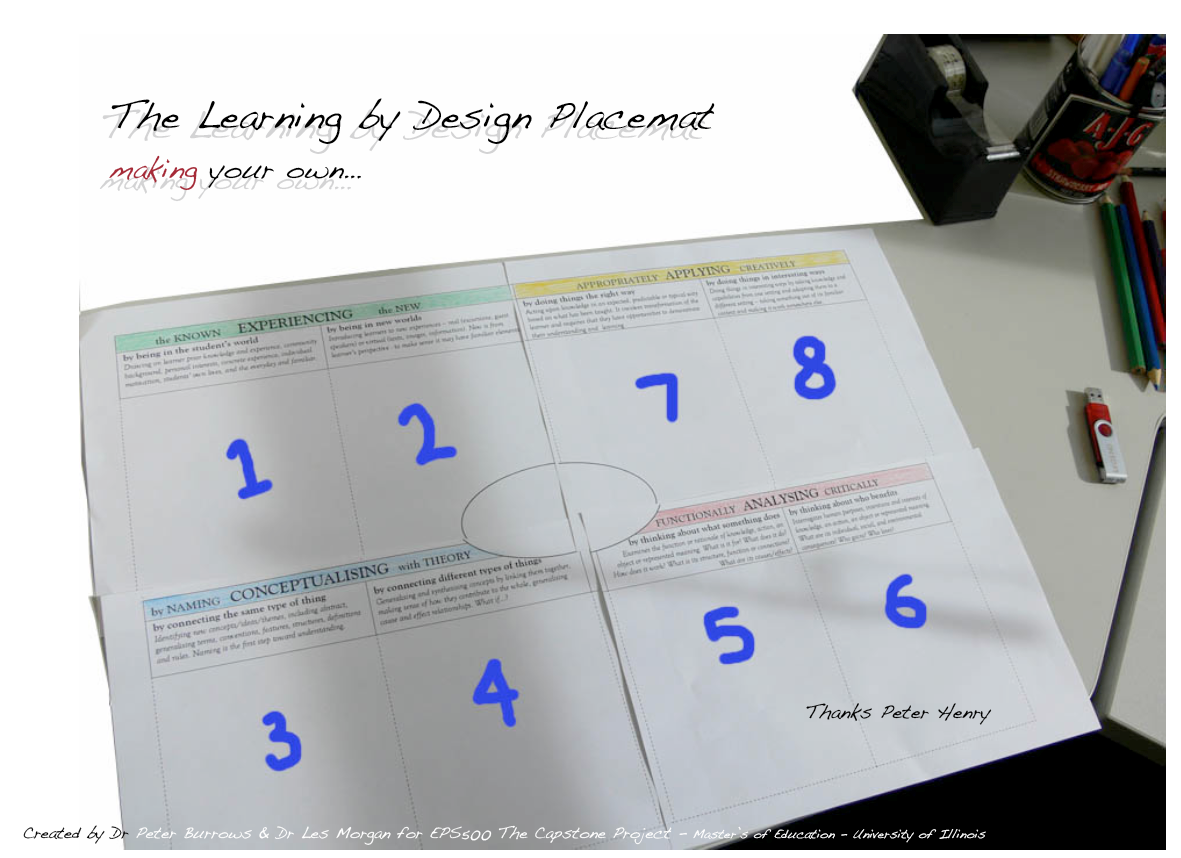The ‘placemat’ is designed as an initial pen-and-paper drafting space for sorting ideas for student activities into the Knowledge Processes. This is an optional step – you may instead decide to move directly into documentation within the online Learning Module environment.
Resources
Making an LbyD Placemat | Download
LbyD Placemat US Letter Size | Download
Planning Map on One Page | Download

